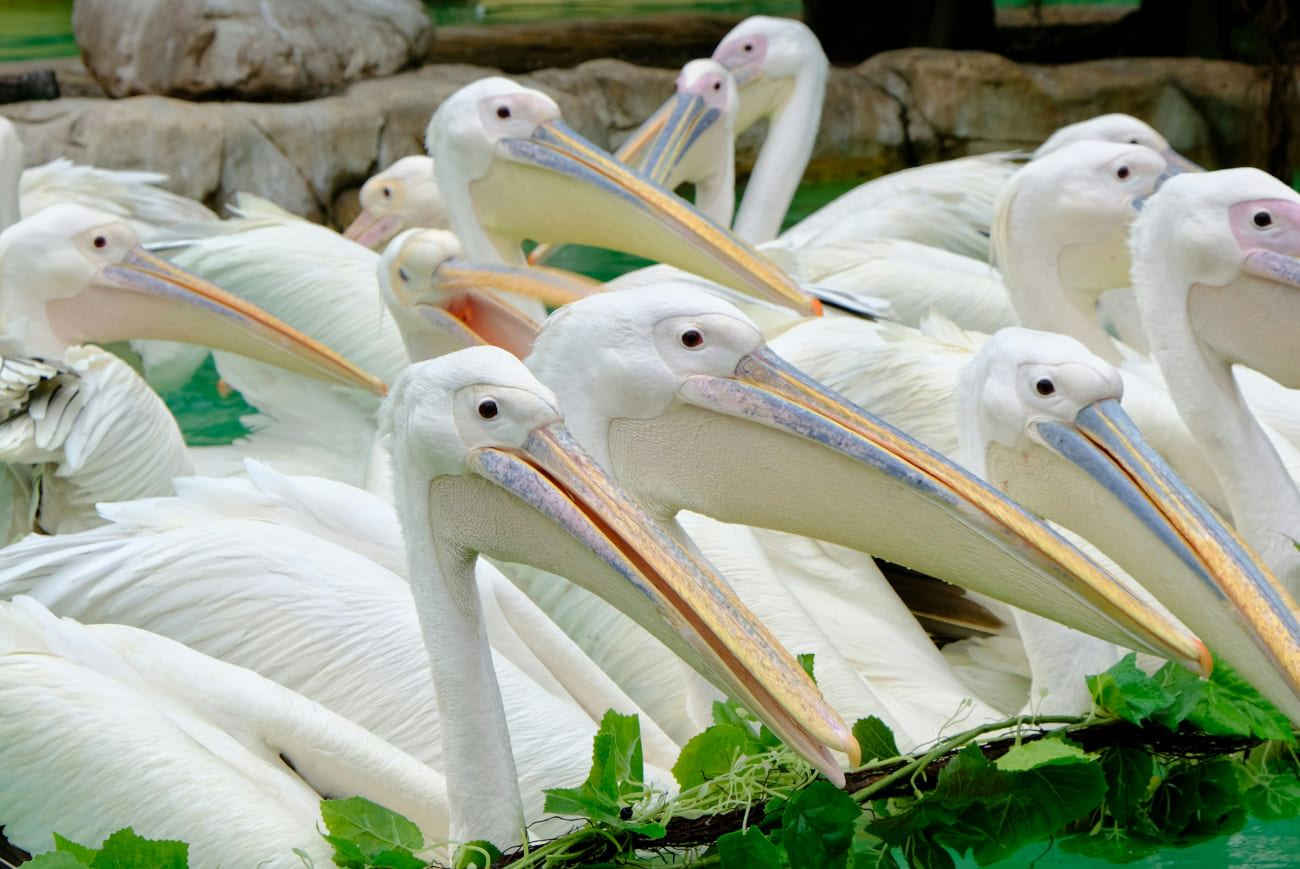The Pink Pelican, also known as the Great White Pelican, is a stunning bird with soft pink feathers and a striking yellow-orange beak equipped with a flexible pouch. This majestic bird has an impressive wingspan of up to 11 feet, making it a powerful flier and a graceful presence in the skies. Found in shallow lakes and wetlands, pink pelicans are highly social birds, often living in large colonies.
Their feeding behavior is a marvel of coordination. Working together, pelicans form groups to herd fish into shallow waters, where they scoop them up using their large pouches. This cooperative hunting strategy not only ensures their survival but also helps maintain the ecological balance of their habitats. Pelicans can consume up to 4 pounds of fish daily, making them essential predators in their ecosystems.
Pink pelicans are also known for their strong family bonds. During breeding seasons, males perform courtship displays, showcasing their vibrant plumage. Both parents participate in incubating the eggs and feeding the chicks, fostering a sense of harmony within their colonies. While not currently endangered, pink pelicans face threats from habitat destruction, pollution, and climate change, emphasizing the importance of preserving wetlands for their survival.
6J39+Q7R, Khirkhiri, Parasiya, Madhya Pradesh 480571, India +927673892931 [email protected]




